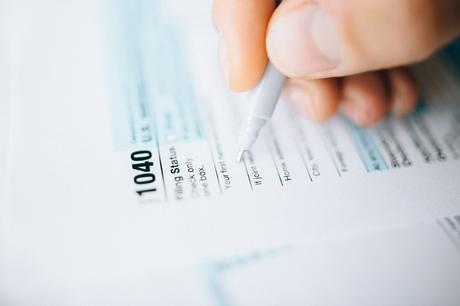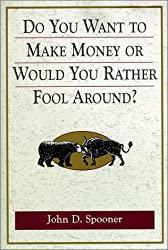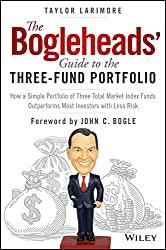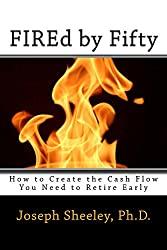
Photo by Nataliya Vaitkevich on Pexels.com
" data-orig-size="1880,1253" data-image-title="person filing tax documents" data-orig-file="https://smallivy.files.wordpress.com/2022/08/pexels-photo-6863323.jpeg" data-image-description="" data-image-meta="{"aperture":"0","credit":"","camera":"","caption":"","created_timestamp":"0","copyright":"","focal_length":"0","iso":"0","shutter_speed":"0","title":"","orientation":"0"}" data-medium-file="https://smallivy.files.wordpress.com/2022/08/pexels-photo-6863323.jpeg?w=300" data-permalink="https://smallivy.com/2022/08/14/your-ira-or-401k-and-taxes/pexels-photo-6863323/" alt="" class="wp-image-22065" data-large-file="https://smallivy.files.wordpress.com/2022/08/pexels-photo-6863323.jpeg?w=723" />Photo by Nataliya Vaitkevich on Pexels.comThe traditional IRA and 401k plan can make things complicated when it comes to taxes. Deciding between a traditional and a Roth IRA or 401k, or whether to convert between a traditional to a Roth IRA, can also be tricky. It is really worth it to run some numbers and different scenarios because what may be good for a friend or your parents may not be what is best for you. There are also assumptions you’ll need to make in running the scenarios like how long you’ll live, whether you’ll keep earning at your current income level, and whether or not you’ll need to make a big withdrawal from your IRA or 401k early in retirement. How your portfolio will do just before and after you retire is also a big factor in which choice is best. In this article we’ll look at some of the different factors and scenarios when choosing between a traditional and Roth account.

My new mini-book is available for just $2.99. Order your copy today!
Traditional is the Government’s Investing Plan
If government officials were wise financially (which they clearly aren’t), they would be doing all they could to encourage people to invest with traditional IRAs and keep the money invested as long as possible. When you invest in a traditional IRA or 401k, you’re also investing for the government. You get to delay taxes on your contributions by not paying taxes on the money when you put it into the account and while it earns money along the way. When you eventually withdraw the money, however, you’ll need to pay taxes on both the money you weren’t taxed on before plus the earnings you make on that money. Really, it’s like you’re investing that portion for the government.
For example, to keep it simple, say there is only one tax bracket – 15% – and you put away $10,000 in a traditional 401k at age 20 and pull the money out at age 70. Let’s also say that you earned 1000% on your money over that time so you have $1,000,000 to pull out at age 70. Because you put the money in a traditional 401k, the government graciously reduced your taxes by $1500 (15% of $10,000) when you put the money in. When you pull the money out, however, the government will take 15% of the full amount, taking $150,000 in taxes and leaving you with $850,000.
Let’s say instead you paid the $1500 in taxes and then were able to invest the other $8500 tax-free like you would in a Roth 401k. You still make 1000% over your working lifetime (the markets are the same), but now that only amounts to $850,000 at age 70. Basically the government let you keep that extra $1500 with the traditional 401k, but you were investing it for the government. When you took the money out, all of the original money plus earnings went to the government in taxes.
Note that with the Roth, the government got an extra $1500 to start with, but then got nothing when you retired. It missed out on all of that growth it would have gotten over that 50 years by taking its taxes at the start. The government really has no way to invest money it collects, so all of that money is spent, so the growth is just lost unless people are investing in traditional 401ks and IRAs. If the government encouraged people to use traditional 401ks and IRAs, they’d have a lot more money in taxes in the future. The trouble is they want to buy things now and don’t worry about the budgets in 50 years because they won’t be in office anymore (maybe).

Actually, it’s even better for the government if you put the money away in your traditional 401k or IRA because the tax brackets aren’t constant. The more you make, the higher a tax you pay. This means that your returns decline as your account grows, but the government’s returns increase. For example, let’s say you are taxed 15% on the first $100,000 you make but then 25% on income over that. If you made and withdrew $200,000 in a traditional 401k, you would pay $15,000 in taxes on the first $100,000 but $25,000 on the second. If you had made a 1000% return on your money before taxes, you would have made a 850% return after taxes on the first $100,000 but only 750% on the second. The government, on the other hand, would have only gotten 15% of the first $100,000 but 25% of the second, so it would be like they made a greater return on their “investment.” The more money you make, the greater their return on their “investment.”
Note: The tax brackets used in examples are all simply made up for the examples to illustrate the point being made. Actual tax brackets work the same way but will be different than they are in the examples used. They also change as new legislation is passed or as old legislation expires. In case you can’t tell, things can get complicated so it is important for you to work with your financial planner or tax professional to figure out what strategy is best in your particular situation, or do the homework yourself if you’re doing the planning on your own.

Stretching things out
So, obviously for the investor/taxpayer, the strategy is to stretch out the payments since that can allow him to stay within a lower tax bracket and thereby increase the amount he keeps. Using the brackets from our example above, if the investor had the $1M to withdraw and took it out over 10 years, assuming the tax brackets remained the same over the decade and he had no other income, he would be withdrawing $100,000 per year and paying 15% taxes on the withdrawals. He therefore would get to keep $850,000 of the money. If instead he took it out over two years, he’d be paying 25% on the money over $100,000 each year, so he’d lose $115,000 of the $500,000 he took out each year. That would leave him with only $760,000 to keep.
Another big advantage to stretching things out is that it leaves more time for the money to grow before taxes are taken and a portion is gobbled up. If you’re taking the money out and spending it, regardless of the taxes, you’ll end up with more money in most situations if you stretch out the payments because the money has more time to grow. I say “most of the time” because if the money is invested and the markets take a big tumble during the period where you take it out, you might have been better off just taking out the money and spending it.
For example, during the period from 1999 through 2009, the markets basically went nowhere. At the end of 1999 we saw the internet bubble burst and stocks fall 30-40% or more. Markets languished for the next three years, but then took off after 2003 with the Bush tax cuts and easing of money rates by the Federal Reserve. But then we saw the 2008 lending meltdown where markets fell again. If you were invested during just this period and taking yearly withdrawals, you might have made money if you were taking money out during the peaks. But if you just invested at the start of the period and left things alone, your account balances basically were the same at the end of the period as they were at the start. If you were taking the money out between 2009 and 2019, however, you saw huge returns and would have been far better off staying invested than you would have been if you’d taken all of the money out at the start. This type of period is more typical than the 1999-2009 period, but you never know what you’ll get if you’re only invested for shorter periods like 10 years or less, so investor beware.

But just for example purposes, let’s say that you were taking the money out $100,000 at a time and the rate of return for your investments during each of the ten years was 5%. (This would never happen, but makes the math easy.) Because of the income you’d be gaining from your investments, you’d actually be able to withdraw money for over 13 years and withdraw $1,325,786 during the period. Of that, you’d pay $198,868 in taxes and keep $1,126,918. Given that you would have only received $850,000 if you had not received the extra income from your investments, the income the money in the account made while you were pulling it out actually paid for your taxes and then some. The government got more money too, receiving almost $200,000 instead of the $150,000 they would have gotten. Again, you’re investing for the government!
What about the Roth?
A Roth IRA or 401k allows you to invest after you’ve paid taxes, but then withdrawals are tax-free. As described near the start of this piece, if your tax rate is the same when you pull the money out as it is when you’re put it in, Roth and traditional accounts will give you the same results. But because most people are in a relatively low tax bracket when they’re working and investing for retirement, then in a high bracket when they’re pulling the money out in retirement because their accounts have grown so large, most people will do better with a Roth. Taxes are also historically low this year but due to increase next year because the Democrats in Congress and the White House are raising taxes on everyone, so this might be the last chance for a while to put some money into a Roth before rates go up. It might even make sense to convert a traditional account to a Roth, paying the lower taxes now to avoid paying higher taxes later. (This is definitely something to work out with a tax planner, because it is complicated).
But on the flip side, if a lot of people start to use Roths instead of traditional accounts, the government will lose a lot of their future income. Most of the money that would have been invested now for them will be taken as current taxes and spent, meaning there would less tax money in the future. This may mean that a future government may go back on their word, taxing Roth withdrawals or just establishing a wealth tax in general. It might be that you’ll get a tax break if you take it today, but not in the future. As Yogi Berra quipped, however, it is difficult to make predictions, especially about the future.
Before you can start investing, you need money to invest. Please check out my latest book, FIREd by Fifty: How to Create the Cash Flow You Need to Retire Early

Have a burning investing question you’d like answered? Please send to[email protected] or leave in a comment.
Disclaimer: This blog is not meant to give financial planning or tax advice. It gives general information on investment strategy, picking stocks, and generally managing money to build wealth. It is not a solicitation to buy or sell stocks or any security. Financial planning advice should be sought from a certified financial planner, which the author is not. Tax advice should be sought from a CPA. All investments involve risk and the reader as urged to consider risks carefully and seek the advice of experts if needed before investing.
